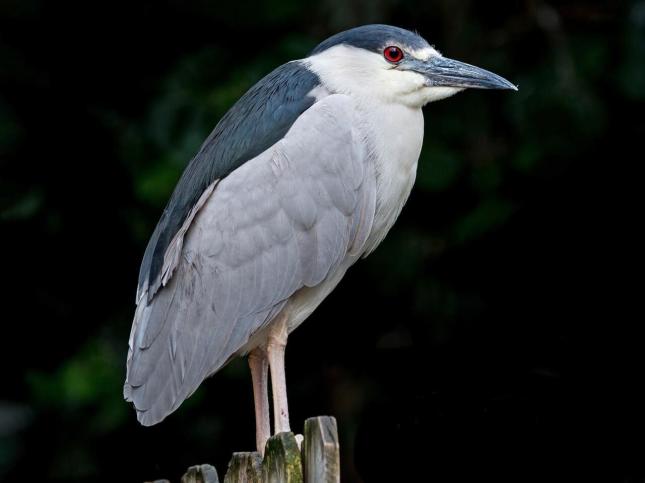
Fun Facts about Black Crowned Night Herons
- Black-crowned Night Herons are stocky birds compared to many of their long-limbed heron relatives. They’re most active at night or at dusk, when you may see their ghostly forms flapping out from daytime roosts to forage in wetlands. In the light of day adults are striking in gray-and-black plumage and long white head plumes.
- Black-crowned Night Herons are common in wetlands across North America—you just may have to look a little harder than you do for most herons. True to their name, these birds do most of their feeding at night and spend much of the day hunched among leaves and branches at the water’s edge. Evening and dusk are good times to look for these rather stout, short-necked herons flying out to foraging grounds. .
- Black-crowned Night Herons are opportunists feeders that eat many kinds of terrestrial, freshwater, and marine animals. Their diet includes leeches, earthworms, insects, crayfish, clams, mussels, fish, amphibians, lizards, snakes, turtles, rodents, birds, and eggs. They also eat carrion, plant materials, and garbage from landfills.
- Rather than stabbing their prey, they grasp it in their bills. Black-crowned Night-Herons normally feed between evening and early morning, avoiding competition with other heron species that use the same habitat during the day. They may feed during the day in the breeding season, when they need extra energy for nesting.
- The male chooses a nest site in a tree or in cattails—usually in a habitat safe from predators such as on an island, in a swamp, or over water—and then advertises for a female. Black-crowned Night Herons nest colonially, often with a dozen nests in a single tree. Colonies sometimes last for 50 years or more. The male starts building the nest, a platform of sticks, twigs, and other woody vegetation which he collects from the ground (or breaks right off of the trees). Once he has found a mate, the male continues collecting material but passes it to the female, who works it into the nest. Some nests are sturdy, while others are flimsy. They measure 12–18 inches across and 8–12 inches high.
- A breeding Black-crowned Night Heron will brood any chick that is placed in its nest. The herons apparently don’t distinguish between their own offspring and nestlings from other parents.
- The oldest Black-crowned Night Heron on record was a female who was at least 21 years, 5 months old when she was found in California in 2012. She was banded there in 1992.

